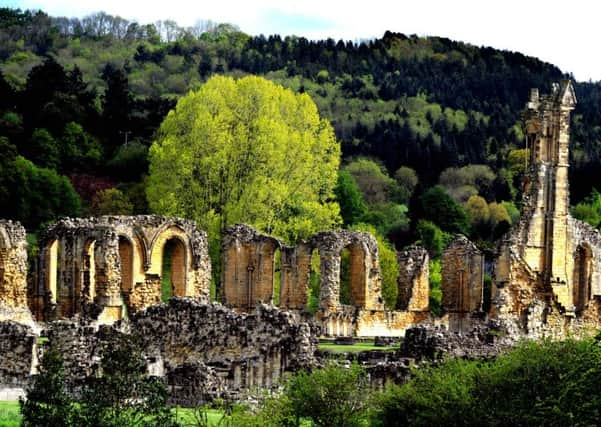Picture Post: Overlooked abbey was one of most influential


It was founded as a Savigniac abbey in January 1135 and took direction from the monastery in Savigny, northern France. It was absorbed by the Cistercian order in 1147.
It was described in the late 14th Century as ‘one of the three shining lights of the north.’ Its financial success was not as great as that of places like Rievaulx but it was famed for its sheep rearing and wool exports. Its church was said to be among the finest 12th-Century churches anywhere in Europe.
Advertisement
Hide AdAdvertisement
Hide AdIts design was by far the most elaborate attempted in its day. It was classed as one of the greatest monasteries in England and inspired dozens of church buildings across the north of the country. It’s Gothic architecture, is even credited with influencing the design of the famous York Minster rose window.
The influence of Byland can be seen at Old Malton Priory, North Yorkshire, where the nave shows the same sort of triforium design. At Tynemouth, the Benedictine priory church has the same distinctive Byland details in its capitals.
Today, the picturesque ruin makes for the perfect place to stop on a family day out, or if you’re walking or cycling in and around the North York Moors National Park.
Rievaulx Abbey and Helmsley Castle are both nearby, meaning it’s a great location for a day out.
Advertisement
Hide AdAdvertisement
Hide AdIf you do visit, make sure to take in the ruined great rose window, the narrow lane between the cloister and west range with its row of 35 niche seats and the on-site museum, which has a wealth of interesting archaeological finds.
Take note also of the exceptionally large cloister, which is about 44 metres (145 feet) square, making it one of the largest in England, which also reflects the size of the community it once served.
Surviving floor tiles in the south transept of the church date from the 13th Century.
Technical details: The photograph was taken on a Nikon D3s digital camera on a 80-100mm lens at 165mm with an exposure of 1/500th sec at f11 with an ISO of 640.